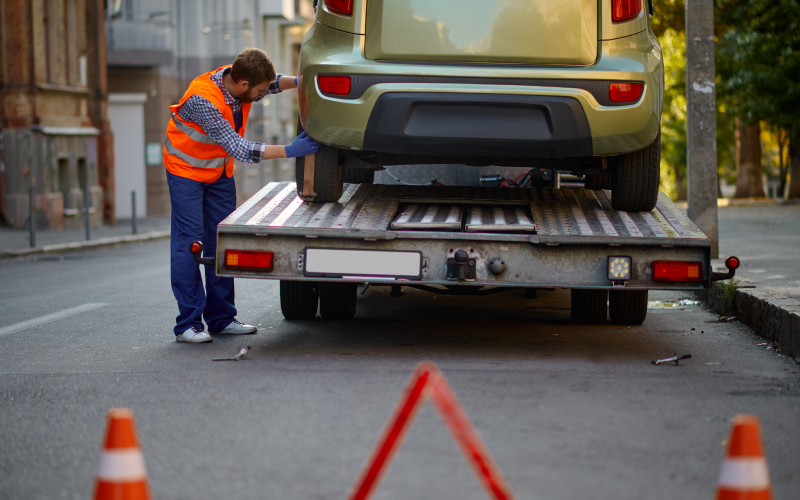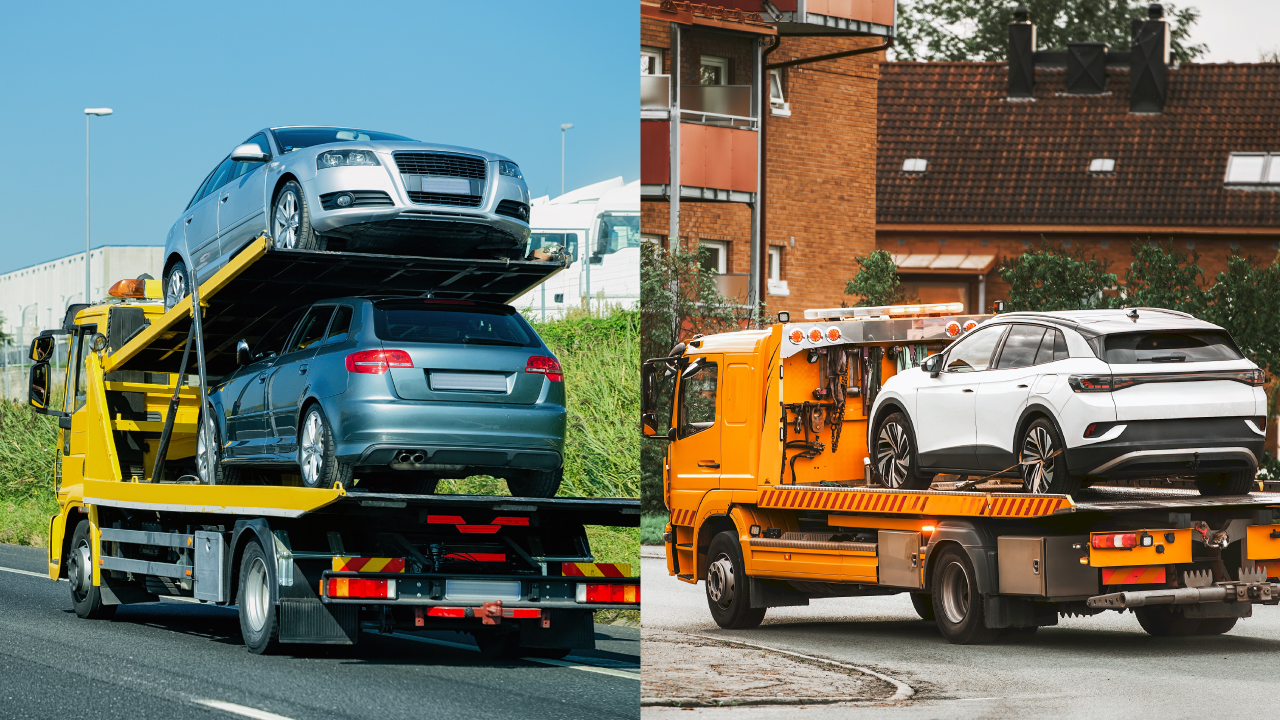Índice:
ToggleWhen faced with emergency situations on the road, such as a mechanical failure of any kind or in the worst case an accident, the need for a car tow truck becomes a priority. Emergency car tow trucks are a resource that allows drivers to receive quick and effective assistance. This article details the step-by-step process of how tow trucks work in emergency situations, from the initial call to transporting the vehicle, and the importance of acting quickly and following safety protocols.
Step 1: The initial call
The first step in the roadside assistance process is to make a call to an emergency towing service. Drivers should have the contact number of a reliable towing company on hand or use mobile apps that offer this type of service. Make sure to provide clear and accurate information: your exact location, the type of vehicle, and the nature of the problem. Doing so will make it easier for the tow truck operator to dispatch the right equipment for your situation.
Speed is of the essence at this stage. In emergency situations, every minute counts, especially if you’re stuck on a busy road. The best emergency tow truck services typically have response times of between 30 to 45 minutes, depending on location and workload. That’s why it’s advisable to always have the number of a fast tow truck handy that can effectively handle your call.
Step 2: Confirmation and preparation
Once you’ve made the call, the tow truck operator will confirm your request and provide you with an estimated arrival time. During this conversation, he or she may also offer you some advice on what to do while you wait for the tow truck to arrive, such as keeping your hazard lights on and, if it’s safe to do so, placing a warning triangle some distance behind your vehicle.
It is important to mention that if you find yourself in a dangerous situation, such as on a busy road, it is advisable to stay away from the road whenever possible. Safety should be your top priority.
Step 3: The arrival of the tow truck
When the emergency tow truck arrives at your location, the operator will introduce themselves and explain the process they will be carrying out. You should make sure that the operator has the necessary training and experience to safely operate your vehicle. Reputable tow truck companies conduct rigorous background checks and training for their staff, ensuring that they are prepared for any situation.
Before the operator starts work, he will ask you to be present so that you can point out any previous damage to the vehicle, as well as to discuss the towing method that will be used. This is especially important to avoid any misunderstandings and additional damage to the car.

Step 4: Vehicle Evaluation
The tow truck operator will perform a quick assessment of the vehicle to determine how to proceed. If the car is in a difficult position, such as in an accident, the operator may need to use specific equipment, such as a winch or boom lift, to lift it. At this point, you and others involved should maintain a safe distance while the operator works.
Modern vehicles often feature delicate electronic and mechanical systems. Therefore, it is important for the operator to handle the vehicle with the utmost care to avoid any damage. This approach not only protects your car, but also ensures that the towing process is carried out as efficiently and safely as possible.
Step 5: Transporting the vehicle
Once the vehicle is secured, the operator will proceed to load it onto the tow truck platform. This process may vary depending on the type of tow truck used. It is worth remembering that flatbed tow trucks, for example, are ideal for towing vehicles that cannot move on their own, while lifting tow trucks are more suitable for cars that can still roll.
After loading the vehicle, the operator will secure the car to the flatbed using straps and chains to ensure that it does not move during transport. It is also important for the operator to inform you of the trailer’s destination, which is usually a mechanic’s shop or your home, depending on what you agree upon.
The importance of speed and security measures
Time is a critical factor in any emergency situation. The speed with which assistance can be obtained makes the difference between a simple inconvenience and a more serious incident. Emergency towing companies are equipped to respond quickly, allowing them to reach the vehicle’s location in the shortest possible time.
In addition, the safety measures implemented by these companies are essential. From staff training to the use of appropriate equipment, every aspect is designed to ensure the safety of both the driver and the tow truck operator. This is extremely important in traffic situations, where the risks can be greater.
In short, the process of operating car tow trucks in emergency situations is a well-structured system that relies on effective communication, speed and safety measures. From the initial call to the transport of the vehicle, each step is created to ensure proper and efficient assistance.
If you find yourself in an emergency situation on the road, don’t hesitate to act quickly. Call an emergency tow truck now! The peace of mind of knowing that help is on the way can make a stressful experience much more manageable.




